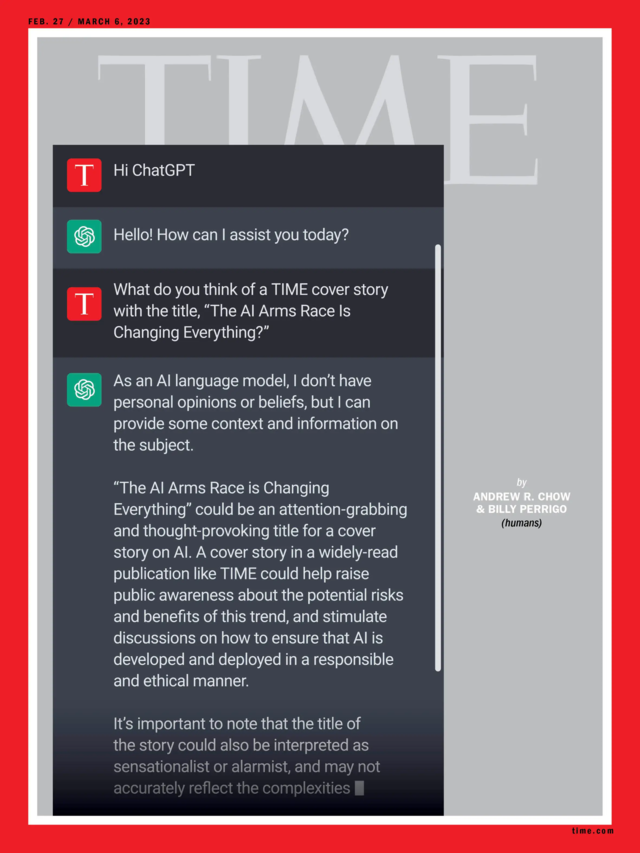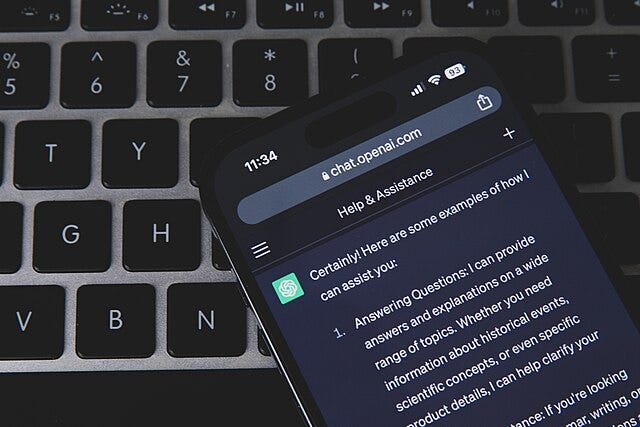Productivity is crucial in today’s social media landscape. Meeting the ever-increasing demands of content creation, engagement, and data analysis is becoming burdensome to many, but leveraging AI, particularly ChatGPT prompts, has become a game changer. With over 13 million unique daily users, ChatGPT is key to upping your social media productivity.
In this guide, we explore ChatGPT and its potential for transforming your social media strategy. We’ll cover the concept of ChatGPT, the benefits of prompts, and practical tips for effective use. We’ll also delve into real-world applications, best practices, and challenges, ensuring you’re ready to harness ChatGPT for enhanced social media productivity while maintaining ethical standards.
Understanding ChatGPT Prompts

Explanation of prompts
ChatGPT prompts serve as the initial instruction or input that you provide to the AI model to do a task or to create a new response. These prompts can be in the form of text, questions, or commands, and they guide the AI in understanding the context and purpose of your request.
For example, if you want ChatGPT to help you draft a social media post, your prompt might be: “Create a compelling Instagram caption for this image.” The quality and clarity of your prompts play a significant role in the AI’s ability to deliver the desired results.
Different prompt formats
There are various formats for prompts, and the choice depends on your specific requirements. Common prompt formats include:
- Open-ended questions: These prompts encourage the AI to provide detailed responses.
- Commands: Commands are concise instructions that tell the AI what to do, like “Summarize this article” or “Translate this text to French.”
- Dialogues: In a dialogue format, you can have a back-and-forth conversation with the AI, where the previous responses guide the next prompt, creating a dynamic interaction.
- Contextual information: You can provide context by sharing relevant details or information before asking a question.
Importance of well-structured prompts
Well-structured prompts are crucial for obtaining accurate and relevant responses from ChatGPT. The AI model relies heavily on the information contained in your prompts to generate content. To create effective prompts:
- Be clear and specific: Clearly articulate your request to the AI. Ambiguity in prompts can lead to unexpected or undesired results. For example, if you wish to discuss backup solutions, try including in your prompt more details as to the type of solutions you are looking for. You can even include the number of words you need.
- Use context: If your prompt requires background information, provide it in a structured manner to ensure the AI understands the context of your request. AI models such as ChatGPT may have issues when prompts are unclear or lack context, which then leads to the generation of responses that are inaccurate.
For example, putting in a prompt like “Tell me about it,” but with no clear subject, ChatGPT may give information that is not exactly aligned with your topic.
- Experiment and refine: It may take some trial and error to find the optimal format and wording for your prompts. Don’t hesitate to experiment and refine them based on the results you receive.
- Check for ethical considerations: Ensure that your prompts align with ethical guidelines and avoid requesting or generating inappropriate or harmful content.
Understanding the nuances of prompts is fundamental to making the most of ChatGPT’s capabilities in enhancing your social media productivity. The effectiveness of your prompts can significantly impact the quality and relevance of the content and insights generated by the AI.
Benefits of Using ChatGPT for Social Media Productivity

1. Time-saving
One of the primary benefits of leveraging ChatGPT for social media productivity is the remarkable time-saving potential. ChatGPT can swiftly draft content, brainstorm ideas, and even schedule posts. This frees up your time to focus on other strategic aspects of your social media presence, such as community engagement and analytics.
Holger Sindbaek, a software developer and the entrepreneur behind Online Solitaire, shares, “As a coder, my strength was never in marketing or personal branding. In the early stages of trying to promote Online Solitaire on social media, I’d often find myself up late, struggling with content creation and feeling time pressure. It seemed like an uphill battle. That’s when I turned to ChatGPT. It wasn’t just about getting posts out quicker; it was about ensuring the content was engaging, even without a marketing background. If you’re like me, not naturally inclined towards branding, tools like ChatGPT can be a game-changer. It’s not about pushing yourself harder but leveraging the right tools to work more efficiently.”
2. Content generation
ChatGPT is a versatile tool for content creation. It can help you generate a wide array of content types, including blog posts, social media captions, product descriptions, and more. Its ability to produce high-quality, relevant content can be a game-changer for maintaining a consistent and engaging online presence.
3. Engagement improvement
Engaging your audience is key in the world of social media, and ChatGPT can enhance this aspect of your strategy. It can help you craft attention-grabbing headlines, respond to comments and messages promptly, and suggest conversation starters to keep your followers engaged and interested in your content.
4. Data analysis
ChatGPT can help with this task by generating summaries for analytics reports, identifying trends, and even helping you interpret the numbers. This type of approach that’s heavy on data can provide more effective strategies and campaigns.
The benefits of using ChatGPT for social media productivity are extensive, spanning from time efficiency to data-driven insights. By harnessing these advantages, you can improve your social media-related operations and effectively engage with your target audience.
Tips for Effective Prompting
Choosing the right prompt style
Selecting the appropriate prompt style is crucial when working with ChatGPT. Consider your objective: if you need detailed explanations, open-ended questions work well. For specific tasks or quick responses, commands are effective. Tailoring your prompt style to your desired outcome ensures the AI comprehends your request correctly.
Customizing prompts for specific platforms
Each social media site has its unique requirements. Customize your prompts to align with the tone and content style of the platform you’re using. For example, prompts for Twitter might be concise and catchy, while prompts for LinkedIn may demand a more professional and informative tone.
Experimenting with different prompts
Don’t hesitate to experiment with a variety of prompts to find the most effective ones. ChatGPT’s responses can vary based on how you frame your requests. Try different wording, formats, or context settings to see which prompts consistently yield the best results for your social media goals.
Analyzing prompt results
Evaluating the results of your prompts is essential for refining your strategy. Take note of what works with that goal in mind. Assess the engagement, quality, and relevance of AI-generated content. This feedback loop will help you optimize your prompts for improved social media productivity.
Real-World Applications
Content creation
ChatGPT proves invaluable for content creation across social media platforms. It can assist in generating engaging and relevant content, be it captions, blog posts, or product descriptions. You may save time and work and maintain a consistent online presence by automating various stages of the content development process.
Customer support
Using ChatGPT for customer support on social media enables quick responses to customer inquiries and issues. The AI can provide information, troubleshoot common problems, and even escalate complex queries to human agents. This responsive approach enhances user experience and builds trust with your audience.
Trend analysis
If you want to stay relevant, you have to make sure you’re up-to-date with social media trends. ChatGPT can help by summarizing articles, discussions, and user-generated content examples related to trending topics. It provides valuable insights, allowing you to tailor your content and strategy to current trends.
Competitor analysis
Analyzing your competitors’ social media strategies is crucial for staying competitive. ChatGPT can assist in gathering and summarizing data about competitors’ activities, content performance, and audience engagement rate. This information aids in refining your approach and identifying areas for improvement.
Best Practices for Leveraging ChatGPT Prompts
Consistency in prompt usage
Consistency is key when leveraging ChatGPT prompts for social media productivity. Establish regular intervals and guidelines for using AI-generated content to maintain a cohesive brand voice and message across your social media channels.
Monitoring and refining prompts
Continuously monitor the performance of your prompts. Track metrics like engagement, relevance, and user feedback. Refine your prompts based on the results. Aside from that, make sure they are flexible enough to meet the ever-changing expectations and needs of your audience.
Combining AI-generated content with human input
While AI can assist in content creation, human input remains indispensable. Blend AI-generated content with human creativity and oversight. This combination ensures that your content remains authentic, resonates with your audience, and aligns with your strategic goals.
Compliance and ethical considerations
Ensure that your AI-generated content and prompts adhere to ethical and legal standards. Avoid generating inappropriate or harmful content, and be aware of privacy and copyright issues. Implement clear guidelines and review processes to maintain ethical practices throughout your social media efforts.
Overcoming Challenges

Avoiding over-automation
While automation is a boon, overdoing it can alienate your audience. Strive for a balance between AI assistance and human interaction. Personalized, authentic engagement is crucial to maintain a meaningful connection with your social media followers.
Managing data privacy concerns
Data privacy is a paramount concern. Be transparent about how AI is used in your social media strategy, especially if it involves user data. Also, make sure you’re compliant with the regulations to protect data. At the same time, you need to prioritize user privacy so you can build trust with your audience over time.
Handling negative feedback
Negative feedback is inevitable. When AI-generated content falls short, it’s essential to address concerns and improve your approach. Maintain open channels of communication and showcase your commitment to customer satisfaction.
Adapting to changes in AI technology
AI technology evolves rapidly. Stay informed about updates and advances in AI. Also, be prepared to modify or change your strategies depending on the situation. New AI capabilities can open up fresh opportunities for enhancing your social media productivity.
Conclusion
ChatGPT prompts offer an innovative solution for boosting social media productivity. We’ve explored their benefits, such as time-saving, content generation, engagement improvement, and data analysis, as well as providing essential tips for effective prompting.
We’ve seen real-world applications in content creation, customer support, trend analysis, and competitor analysis. However, challenges like over-automation, data privacy, negative feedback, and adapting to AI’s evolution need to be addressed.
We encourage you to leverage ChatGPT for your social media strategy while maintaining ethical considerations. The future of AI in social media is bright, with evolving tools and opportunities on the horizon. Embrace ChatGPT as a valuable asset in navigating this dynamic landscape, one prompt at a time.

